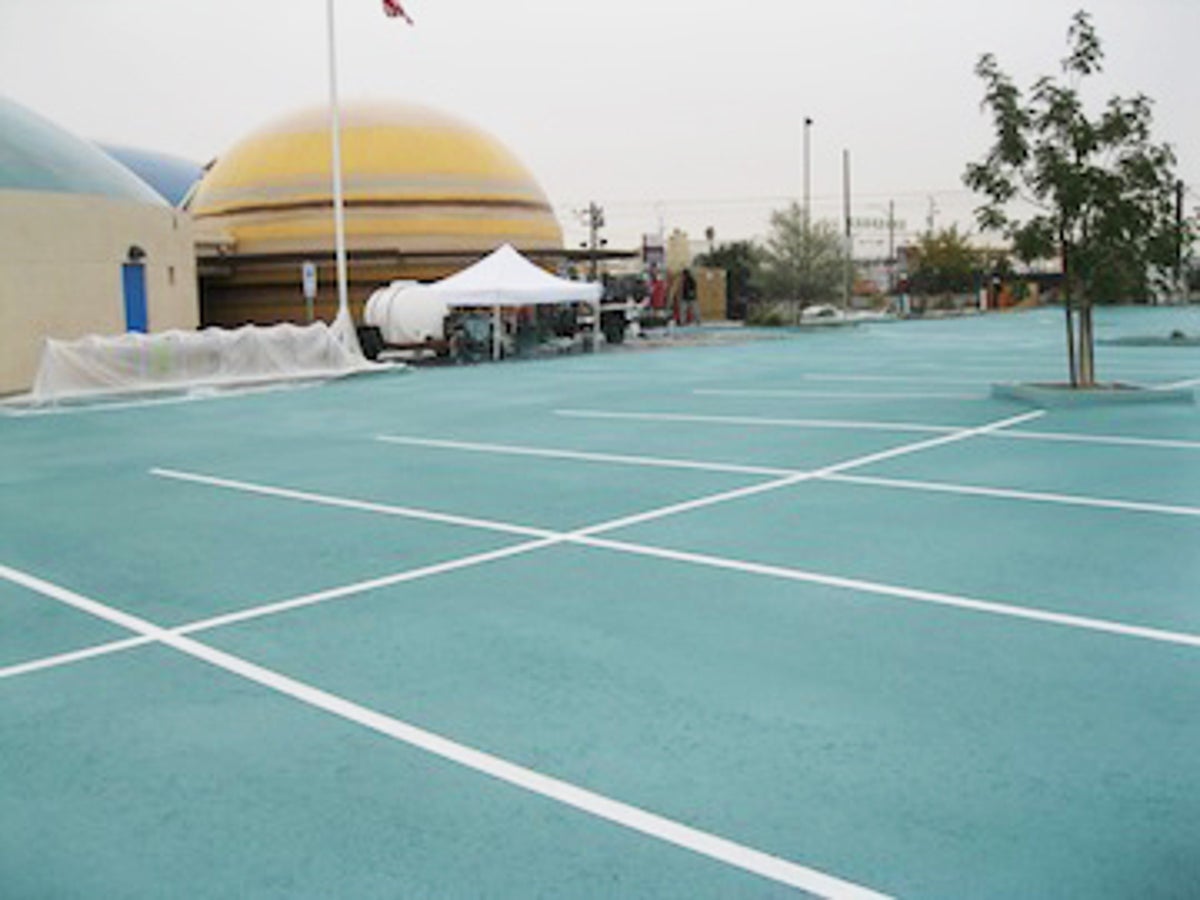A school 'goes green' with cooler pavement (photos)
A school in Phoenix becomes a testing ground for "cooler pavement," a light-colored coating over asphalt that reflects heat.

A greener shade of cool
The Duffy charter school in Phoenix is a test ground for a light-colored covering over its asphalt parking lot, which is 30 degrees to 40 degrees cooler than black asphalt. Interest in reflective surfaces, including white "cool roofs," is growing as a relatively easy and inexpensive way to reduce the urban heat island effect and mitigate global warming.
See related article: 'Green asphalt' layers cool surface on school lot.
Spray-on pavement
The company that developed the "cool pavement" material is Emerald Cities, which offered to do the installation at the school and finished the project a few weeks ago.
The material is made up of light-colored pigments (green is not the only color) and a nano-engineered concrete that is stronger than normal concrete. That allows just a thin coating to be sprayed on, rather than a two-inch coating applied with heavy equipment.
Mixing light concrete
The material being mixed and poured before application. It can be mixed in different thicknesses, allowing it to be applied either by spraying, rolling it on, or pressing it with a squeegie-like applicator.
Cool pavement from above
An artist's rendition of how the cool pavement looks from above. Having light-colored surfaces reduces the air conditioning load of buildings and reduces the urban heat island effect, where built-up areas get hotter than rural areas.

